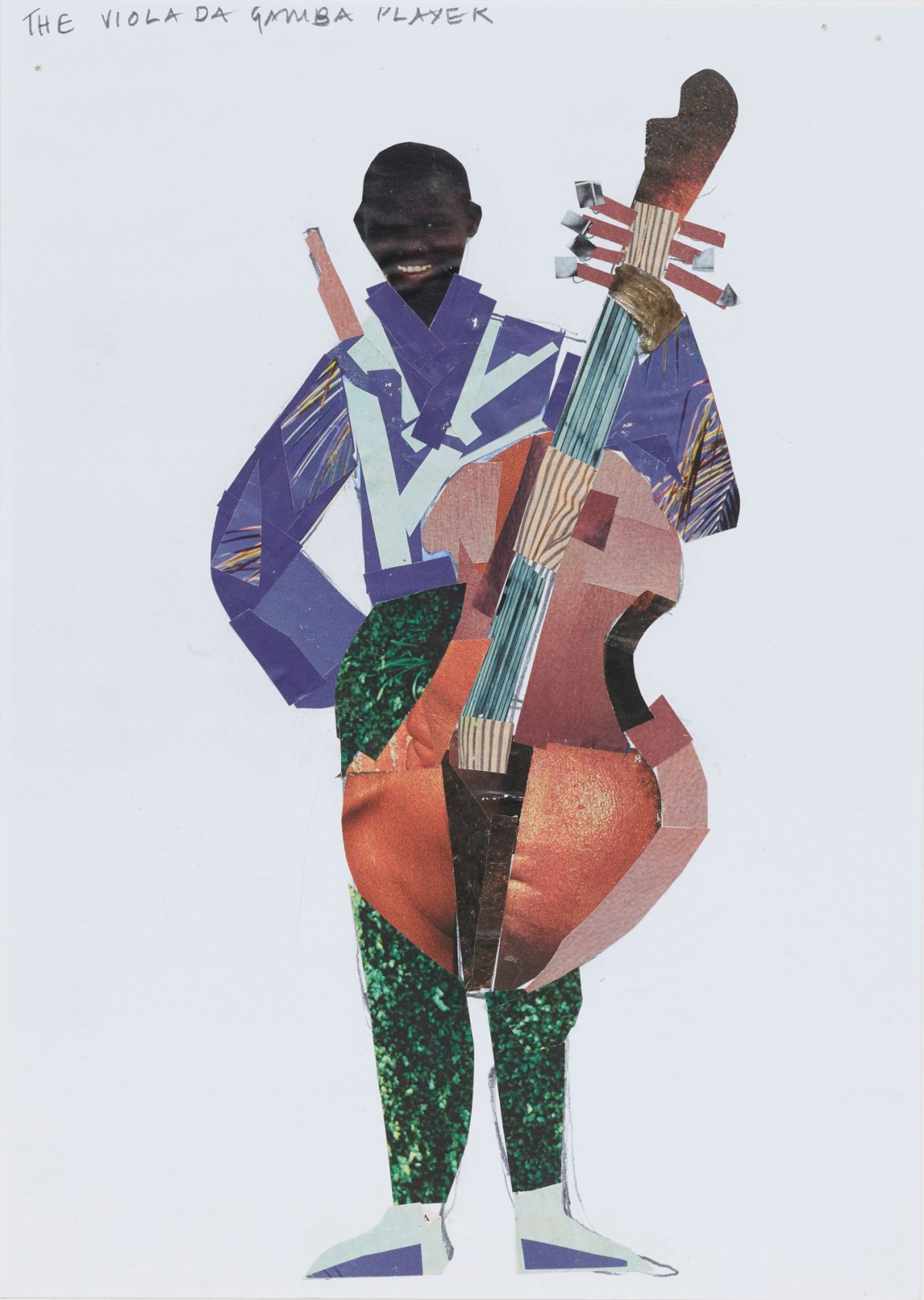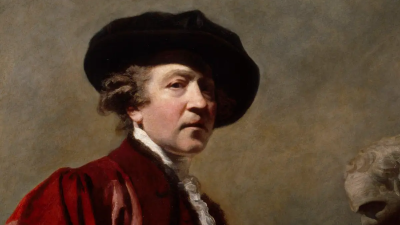
Lubaina Himid RA, Naming the Money paperworks, 2004.
455 mm x 610 mm. © The Artist. © Photo: Royal Academy of Arts, London. Photographer: Prudence Cuming Associates Limited.
This image is released under Creative Commons CC-BY-NC-ND
To licence this image for commercial purposes, contact our Picture Library at picturelibrary@royalacademy.org.uk

Lubaina Himid RA, Naming the Money paperworks, 2004.
455 mm x 610 mm. © The Artist. © Photo: Royal Academy of Arts, London. Photographer: Prudence Cuming Associates Limited.
This image is released under Creative Commons CC-BY-NC-ND
To licence this image for commercial purposes, contact our Picture Library at picturelibrary@royalacademy.org.uk

Lubaina Himid RA, Naming the Money paperworks, 2004.
455 mm x 610 mm. © The Artist. © Photo: Royal Academy of Arts, London. Photographer: Prudence Cuming Associates Limited.
This image is released under Creative Commons CC-BY-NC-ND
To licence this image for commercial purposes, contact our Picture Library at picturelibrary@royalacademy.org.uk

Lubaina Himid RA, Naming the Money paperworks, 2004.
455 mm x 610 mm. © The Artist. © Photo: Royal Academy of Arts, London. Photographer: Prudence Cuming Associates Limited.
This image is released under Creative Commons CC-BY-NC-ND
To licence this image for commercial purposes, contact our Picture Library at picturelibrary@royalacademy.org.uk

Lubaina Himid RA, Naming the Money paperworks, 2004.
455 mm x 610 mm. © The Artist. © Photo: Royal Academy of Arts, London. Photographer: Prudence Cuming Associates Limited.
This image is released under Creative Commons CC-BY-NC-ND
To licence this image for commercial purposes, contact our Picture Library at picturelibrary@royalacademy.org.uk

Lubaina Himid RA, Naming the Money paperworks, 2004.
455 mm x 610 mm. © The Artist. © Photo: Royal Academy of Arts, London. Photographer: Prudence Cuming Associates Limited.
This image is released under Creative Commons CC-BY-NC-ND
To licence this image for commercial purposes, contact our Picture Library at picturelibrary@royalacademy.org.uk

Lubaina Himid RA, Naming the Money paperworks, 2004.
455 mm x 610 mm. © The Artist. © Photo: Royal Academy of Arts, London. Photographer: Prudence Cuming Associates Limited.
This image is released under Creative Commons CC-BY-NC-ND
To licence this image for commercial purposes, contact our Picture Library at picturelibrary@royalacademy.org.uk

Lubaina Himid RA, Naming the Money paperworks, 2004.
455 mm x 610 mm. © The Artist. © Photo: Royal Academy of Arts, London. Photographer: Prudence Cuming Associates Limited.
This image is released under Creative Commons CC-BY-NC-ND
To licence this image for commercial purposes, contact our Picture Library at picturelibrary@royalacademy.org.uk

Lubaina Himid RA, Naming the Money paperworks, 2004.
455 mm x 610 mm. © The Artist. © Photo: Royal Academy of Arts, London. Photographer: Prudence Cuming Associates Limited.
This image is released under Creative Commons CC-BY-NC-ND
To licence this image for commercial purposes, contact our Picture Library at picturelibrary@royalacademy.org.uk

Lubaina Himid RA, Naming the Money paperworks, 2004.
455 mm x 610 mm. © The Artist. © Photo: Royal Academy of Arts, London. Photographer: Prudence Cuming Associates Limited.
This image is released under Creative Commons CC-BY-NC-ND
To licence this image for commercial purposes, contact our Picture Library at picturelibrary@royalacademy.org.uk

Lubaina Himid RA, Naming the Money paperworks, 2004.
455 mm x 610 mm. © The Artist. © Photo: Royal Academy of Arts, London. Photographer: Prudence Cuming Associates Limited.
This image is released under Creative Commons CC-BY-NC-ND
To licence this image for commercial purposes, contact our Picture Library at picturelibrary@royalacademy.org.uk

Lubaina Himid RA, Naming the Money paperworks, 2004.
455 mm x 610 mm. © The Artist. © Photo: Royal Academy of Arts, London. Photographer: Prudence Cuming Associates Limited.
This image is released under Creative Commons CC-BY-NC-ND
To licence this image for commercial purposes, contact our Picture Library at picturelibrary@royalacademy.org.uk

Lubaina Himid RA, Naming the Money paperworks, 2004.
455 mm x 610 mm. © The Artist. © Photo: Royal Academy of Arts, London. Photographer: Prudence Cuming Associates Limited.
This image is released under Creative Commons CC-BY-NC-ND
To licence this image for commercial purposes, contact our Picture Library at picturelibrary@royalacademy.org.uk

Lubaina Himid RA, Naming the Money paperworks, 2004.
455 mm x 610 mm. © The Artist. © Photo: Royal Academy of Arts, London. Photographer: Prudence Cuming Associates Limited.
This image is released under Creative Commons CC-BY-NC-ND
To licence this image for commercial purposes, contact our Picture Library at picturelibrary@royalacademy.org.uk

Lubaina Himid RA, Naming the Money paperworks, 2004.
455 mm x 610 mm. © The Artist. © Photo: Royal Academy of Arts, London. Photographer: Prudence Cuming Associates Limited.
This image is released under Creative Commons CC-BY-NC-ND
To licence this image for commercial purposes, contact our Picture Library at picturelibrary@royalacademy.org.uk

Lubaina Himid RA, Naming the Money paperworks, 2004.
455 mm x 610 mm. © The Artist. © Photo: Royal Academy of Arts, London. Photographer: Prudence Cuming Associates Limited.
This image is released under Creative Commons CC-BY-NC-ND
To licence this image for commercial purposes, contact our Picture Library at picturelibrary@royalacademy.org.uk

Lubaina Himid RA, Naming the Money paperworks, 2004.
455 mm x 610 mm. © The Artist. © Photo: Royal Academy of Arts, London. Photographer: Prudence Cuming Associates Limited.
This image is released under Creative Commons CC-BY-NC-ND
To licence this image for commercial purposes, contact our Picture Library at picturelibrary@royalacademy.org.uk

Lubaina Himid RA, Naming the Money paperworks, 2004.
455 mm x 610 mm. © The Artist. © Photo: Royal Academy of Arts, London. Photographer: Prudence Cuming Associates Limited.
This image is released under Creative Commons CC-BY-NC-ND
To licence this image for commercial purposes, contact our Picture Library at picturelibrary@royalacademy.org.uk

Lubaina Himid RA, Naming the Money paperworks, 2004.
455 mm x 610 mm. © The Artist. © Photo: Royal Academy of Arts, London. Photographer: Prudence Cuming Associates Limited.
This image is released under Creative Commons CC-BY-NC-ND
To licence this image for commercial purposes, contact our Picture Library at picturelibrary@royalacademy.org.uk

Lubaina Himid RA, Naming the Money paperworks, 2004.
455 mm x 610 mm. © The Artist. © Photo: Royal Academy of Arts, London. Photographer: Prudence Cuming Associates Limited.
This image is released under Creative Commons CC-BY-NC-ND
To licence this image for commercial purposes, contact our Picture Library at picturelibrary@royalacademy.org.uk
Naming the Money paperworks, 2004
Lubaina Himid RA (b. 1954)
RA Collection: Art
On free display in Collection Gallery
Lubaina Himid's 'Diploma work' relates to her Turner Prize-winning installation piece Naming the Money (2004, see https://lubainahimid.uk/portfolio/naming-the-money/).This work addresses the hidden but immense contribution of the Black diaspora to the economic and cultural foundations of modern Europe.
Himid reflects that while developing the project she became pre-occupied primarily with the ‘naming’ aspect of the work; grappling with ‘the dilemma of losing your name, being relieved of your real identity, being saddled with another... and how you then have to invent something else equally real…to make sense of being alive'. The installation, which the artist presented to the International Museum of Slavery, National Museums Liverpool, features 100 life-size cut-out figures. These represent, as Himid describes it: 'the story of the slave/servant but also of the émigré and the asylum seeker. Each cut-out has a real name, each one is able to say who they actually are but each one lives with their new name and their new unpaid occupation attempting somehow to reconcile the two'.
The figures in Naming the Money are based on one of the ten roles depicted in these pairs of paper-works: ceramicists, herbalists, toy makers, dog trainers, drummers, viola de gamba players, dancers, shoemakers, map makers and painters. In the installation, these are accompanied by a soundtrack with the voices of the figures telling their stories.
Himid produced these paper-works early on in developing the installation project and describes them as somewhere between a sketch and a ‘pitch’, ‘a way of thinking through’ and showing how the cut-out sculptures would look. Each pair features one painted figure and one in collage to represent different characters in the same role.
Himid states: ‘I became really excited by the endless possibilities for colour, texture, and decisions about the clothes and objects.The expression on the face of each person was different, the process opened up more opportunities for dialogue between the cut-outs themselves, between now and then, between art and politics. Although these works are quiet and sedate compared to the installation, in my head this was the point at which I knew the whole thing was going to work'.
Lubaina Himid's paper-works for Naming the Money are currently on display in the Collection Gallery at the Royal Academy, see https://www.royalacademy.org.uk/exhibition/lubaina-himid-diploma-work
Object details
455 mm x 610 mm
Start exploring the RA Collection
- Explore art works, paint-smeared palettes, scribbled letters and more...
- Artists and architects have run the RA for 250 years.
Our Collection is a record of them.



